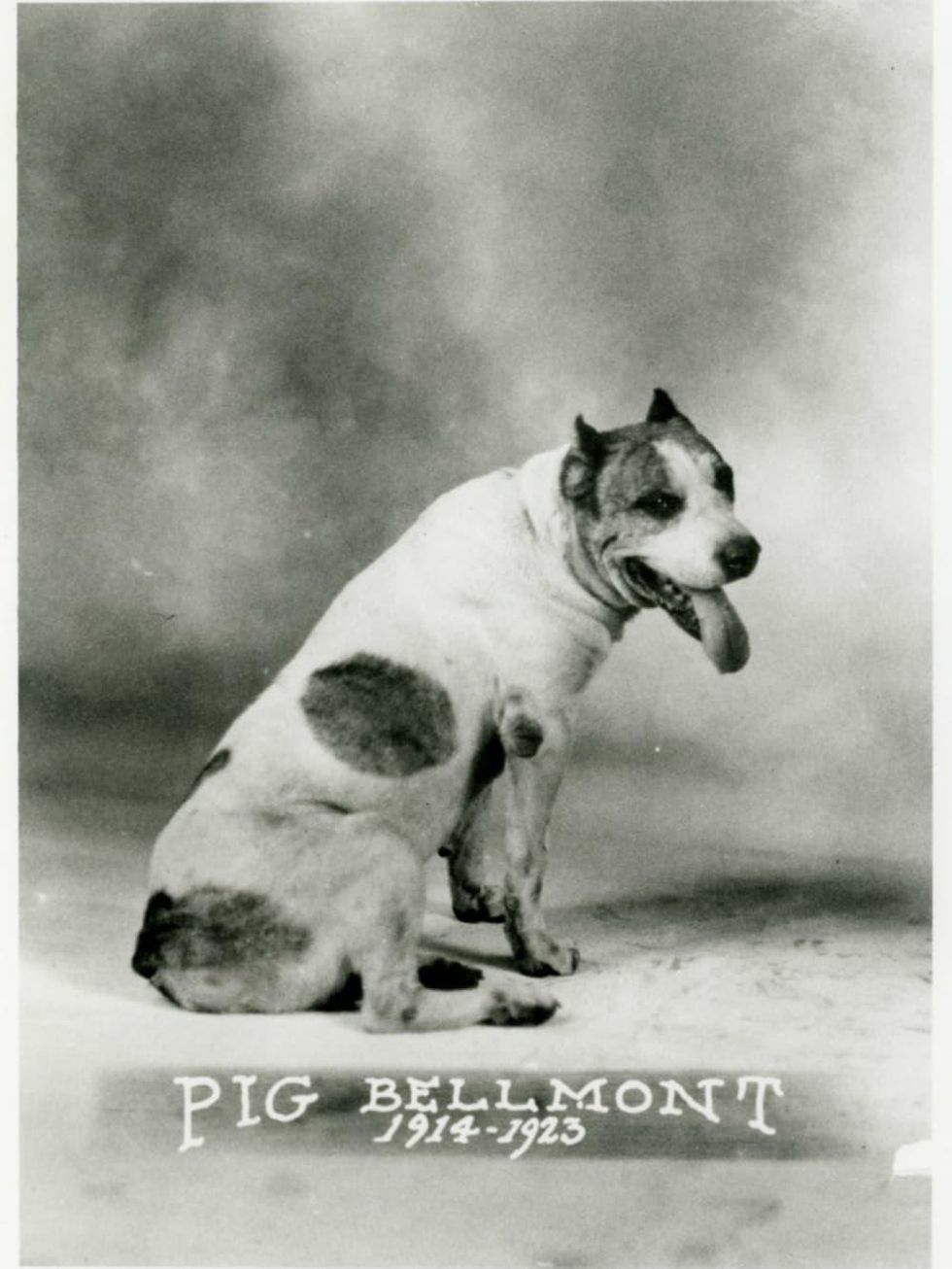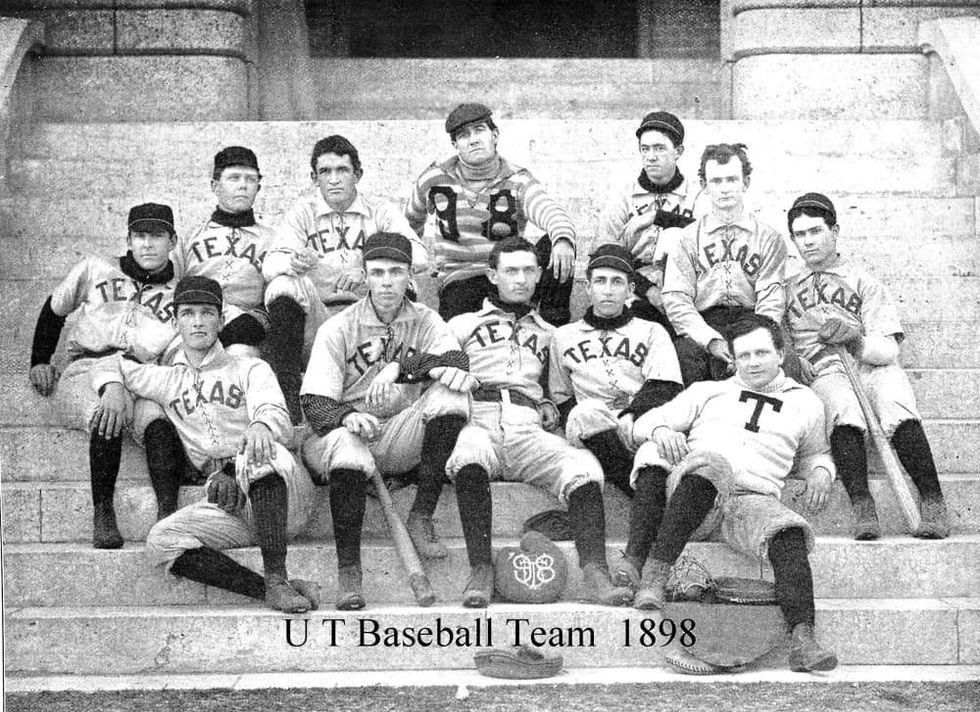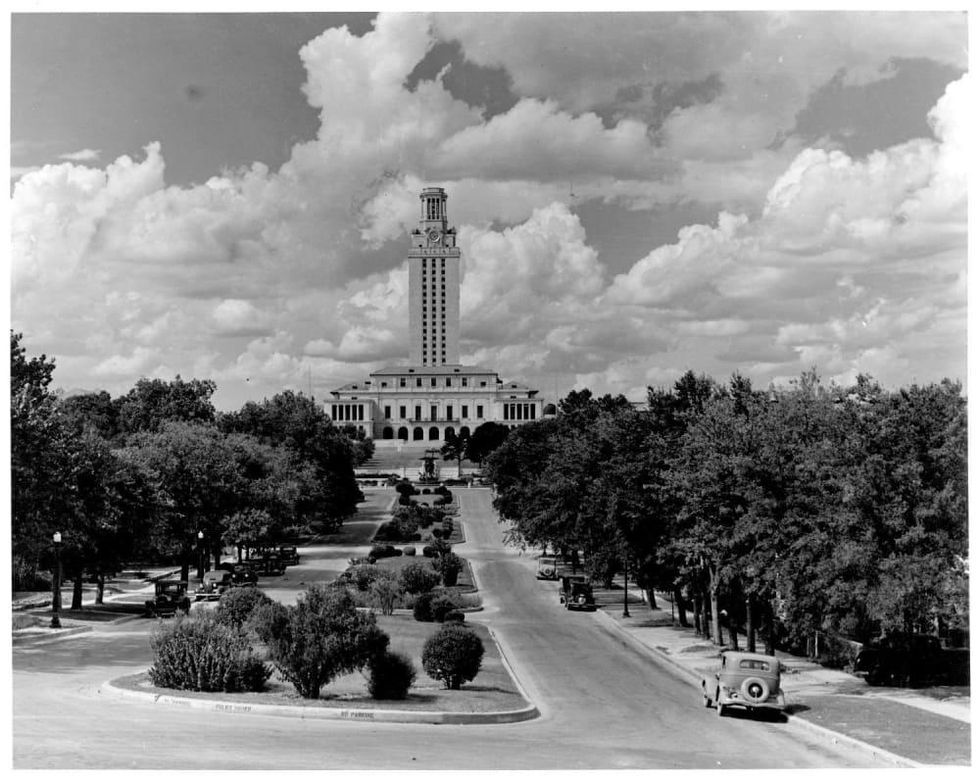History of Austin
The legendary history of UT Austin includes barbecued Bevo and brain collections
Students will return to the University of Texas campus in just a few weeks, beginning another year of football games, rush, Big Bertha, Bevo, and other tried-and-true traditions. In the spirit of all things UT, we're uncovering the perhaps lesser known history of Texas' flagship school.
A slow start
In 1839, the Republic of Texas mandated that a public university be established. Although this was discussed and debated for several decades, the dream didn't became reality until 1876, when the Texas Legislature voted to establish a school.
In 1881, Austin was chosen as the location for the school, and construction began on the 40 acres the following year. In the fall of 1883, the university opened it doors to 21 students and eight professors in a single building called, simply, the Main Building.
Fast facts
Today, the University of Texas at Austin is the system's flagship campus, encompassing 431 acres with more than 51,000 students and 3,000 faculty members, along with nine additional academic campuses and six health centers across the state.
The flagship campus has 18 colleges and schools, 432,000 alumni, 17 libraries, four museums, and more than 1,300 student groups.
Famous graduates include former first lady Lady Bird Johnson, journalist Walter Cronkite, astronomer Neil deGrasse Tyson (who met his wife in a UT physics class), actor Matthew McConaughey, former first lady Laura Bush, astronaut Allan Bean, Michael Dell, late actress Farrah Fawcett, and basketball player Kevin Durant, who played for the Longhorns for one season and donated $3 million to the school in 2018.
The UT campus is one of the top tier research universities in the country and was ranked the 32nd best university in the world by U.S. News & World Report for 2018-2019.
In addition, UT boasts 112 Fulbright scholars, 31 Rhodes scholars, 23 Marshall scholars, and has a number of notable Nobel laureate faculty members, including world-renowned physicist Steven Weinberg.
Striking it rich
Stepping away from academics, for which the school is well-known around the world, Longhorns uncover the history and lore passed down through the generations. Like all great Texas legends, UT's journey to become one of the world's premier schools involves good, old fashioned West Texas oil.
The Santa Rita No. 1 oil well, now located on Martin Luther King, Jr. Boulevard and San Jacinto Street, near the football stadium, was the first oil-producing well on UT property in West Texas. The well named after the Patron Saint of the Impossible, because many believed striking oil was unlikely in that particular area.
But strike it did starting on May 25, 1923. Three days later, on May 28, there was a huge roar throughout the land, and production began flowing.
Oil royalties from the Santa Rita led to the establishment of many campus buildings in the early days. Today, the royalties help subsidize free tuition for students from families earning $65,000 or less (this program will be implemented in 2020), and have established the university as one of the wealthiest in the country.
This is your brain
There is a brain collection house in the Department of Psychology. In the mid-1980s, the Austin State Hospital lacked storage space and gave their brain collection to UT for preservation purposes. Half of the collection went to the psychology department, and the other half went to the Animal Resource Center on campus. Due to poor record-keeping or other reasons, the half stored in the Resource Center eventually went missing.
It has long been rumored that the collection contained the brain of Charles Whitman, the infamous UT Tower shooter, who was plagued with headaches and other issues shortly before his shooting spree on August 1, 1966. Just before noon, Whitman, a troubled student and skilled marksman, shot and killed 15 people and injured 32 others from atop the towering landmark.
In his suicide note, Whitman requested that an official autopsy be taken of his brain, and post-mortem examination revealed that he did have a malignant brain tumor. Whether or not this tumor led to his violent actions on that stifling day in August is a subject of great debate which continues to this day.
Tunnel trouble
In 1928, engineering professor Carl Eckhardt designed an eight-mile elaborate system of underground tunnels on campus to transfer energy. Since that time, there has been the occasional urban explorer attempting (successfully and unsuccessfully) to traverse the tunnels.
Most notably, one explorer was successful and created a documentary about his experience, Subterranean City: The UT Steam Tunnels, in 2005. After more learned about the underground trail, the university announced that trespassers would be arrested, and if they are students, will be expelled. School officials have also added extra security measures such as door triggers and motion detectors to prevent future break-ins. Although exploring the tunnels has become increasingly difficult, there remains a few adventurous souls with infinite curiosity.
Barbecuing Bevo
The first UT mascot was not a steer, but a tan and white bull terrier named Pig Bellmont that lived on the original 40 acres until he was run over by an automobile. After Pig's death, the official mascot became the Texas Longhorn.
According to The Alcalde, the first Bevo was barbecued and served as a meal at a university football banquet. Aggies in attendance were presented with the hide, which they had previously branded with "13-0", the score of the 1915 Longhorn-Aggie matchup won by Texas A&M.
Luckily barbecuing Bevo did not become a tradition. Today, when Bevo ends his service to the school, he heads to a ranch for a well-deserved retirement.



